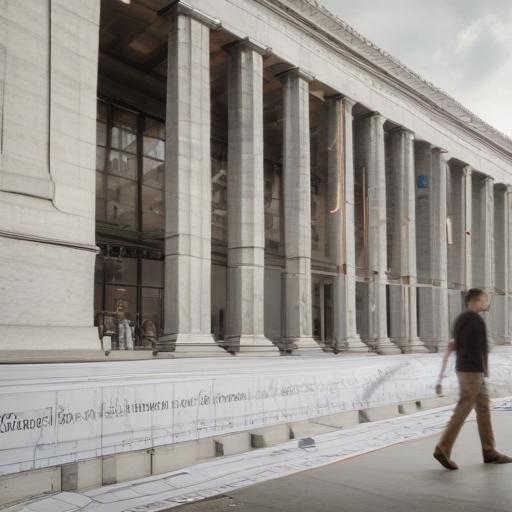President Trump made a notable visit to the Federal Reserve on Thursday, equipped with a hardhat as he inspected the ongoing $2.5 billion renovation project at the institution’s headquarters. Federal Reserve Chairman Jerome Powell guided Trump through the construction site, marking an effort to address the increasing criticism surrounding the project’s costs.
During the visit, a moment of tension arose when Trump asserted that renovation expenses had surged to $3.1 billion. However, Powell promptly fact-checked this claim by clarifying that Trump’s figure included the renovation of an additional building, the William McChesney Martin building, which was completed years ago. “You just added in a third building. It’s not new,” Powell stated, highlighting the importance of clarity in the public discussion regarding the project’s financial details.
The renovation project, which began in mid-2022, is set to finish by 2027 and has attracted attention not only from Trump but also from prominent senators and administration officials who were present during the tour. Trump commented on the complexity of the renovation, noting, “I see a lot of very expensive work, there’s no question about it.”
Throughout the tour, Trump downplayed any personal confrontation with Powell, focusing instead on the necessity of completing the renovation and emphasizing his desire for lower interest rates. He described any discussions about firing Powell as unwarranted, stating, “To do that is a big move, and I just don’t think it’s necessary.” This reflects a strategic pivot in his approach while maintaining pressure on Powell to adjust the current interest rates.
As the Federal Open Market Committee (FOMC) is scheduled to meet next week for a decision on interest rates, Trump reiterated his hopes for a favorable outcome, indicating a commitment to supporting the project while advocating for economic adjustments.
This visit underscores the delicate balance between the executive branch and the Federal Reserve, especially in an election year, revealing both the political and economic implications of the ongoing renovation and the leadership of the Fed.
